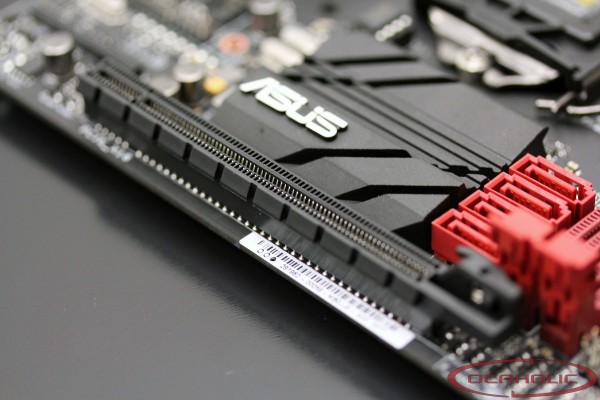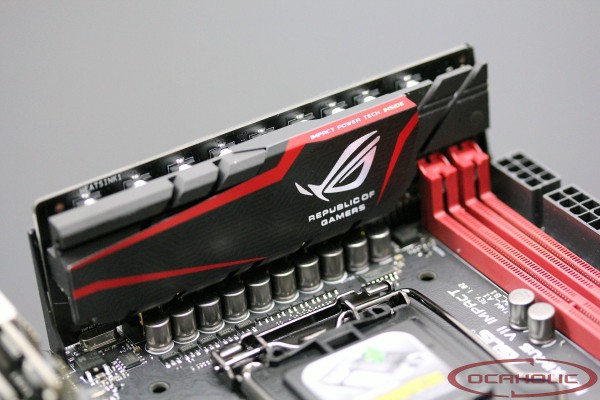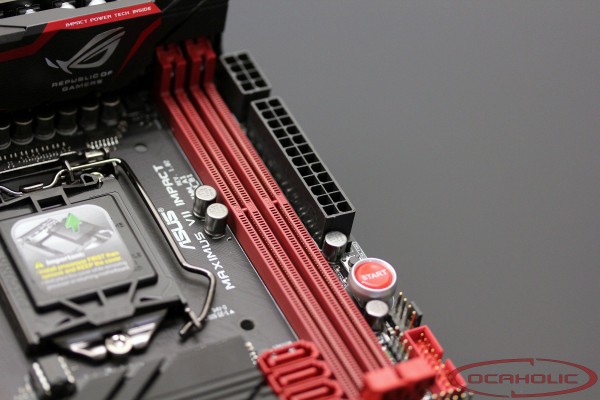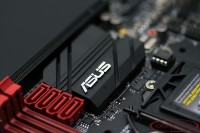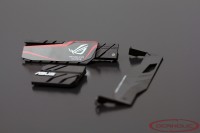ASUS Maximus VII Impact Review
Published by Hiwa Pouri on 22.08.14Page:
Layout
At a first glance the ASUS Maximus VII Impact looks very good with its harmonic design. Once again the ROG-colors - red, black and white - suite nicely and together with the black PCB it becomes a beautiful product. The layout itself is well thought and there is for example plenty of space around the CPU socket to install even todays largest CPU coolers. On a mini-ITX motherboard it is crucial that the CPU socket is in the center of the motherboard, otherwise installing big aircoolers becomes an issue. There are plenty of other mini-ITX motherboards out there, which have the CPU socket closer to the PCI-Express x16 slot. This bare the consequence, that the cooler is going to collide with the VGA. Looking for the SATA connectors shows, that ASUS placed them at the very only reasonable position. Furthermore there are straight connectors, since there just isn't enough space for angled ones.The ASUS Maximus VII Impact comes with a digital 8+2 phase power design. The CPU gets eight phases and the memory gets a stable current supply from two individual phases. Furthermore ASUS equips this board with their so called "BlackWing Chokes". Furthermore those chokes can cope with up to 60A per phase. Furthermore there are 10K Black Metallic Capacitors, which have an average life expectancy of 10'000 hours. In other words, the Impact received the same power design, which can also be found on the bigger ASUS ROG Maximus VII motherboards. Since, this mini-ITX motherboard offers very limited space, ASUS has put the VRM on a daughter PCB, which has been soldered to the motherboard.
On the Maximus VII Impact the PCH is being cooled by a passive cooling block. A closer look at the area where the VRM is, shows that there are two additional heatsinks - one is on the front-side and the other is located on the back-side. The design as well as the build quality is on an excellent level, which is typical for ASUS' Maximus VII series motherboards.
Totally you'll find four DIMM-slots on the Maximus VII Formula. Officially supported are DDR3 3300(O.C.) / 3200(O.C.) / 3100 / 3000 / 2933 / 2800 / 2666 / 2600 / 2500 / 2400 / 2200 / 2133 / 2000 / 1866 / 1800 / 1600 / 1333 MHz. There is engough space between the DIMM-slots and the CPU socket which means that you wont encounter compatibility problems with big coolers even when you choose to install RAM with big heatspreaders. Also supported are Xtreme Memory Profiles (XMP) in version 1.3.
| Navigate through the articles | |
 ASUS Maximus VII Formula Review
ASUS Maximus VII Formula Review |
Gigabyte-Z97X-UD3H Preview
 |
|
|
